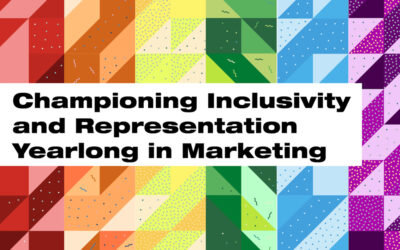Fresh off the heels of Mental Health Awareness Month, when there was a plethora of programming, news, and initiatives uplifting the importance of mental health, it is critical to continue the conversation beyond this dynamic key moment in time, especially for communities of color. Mental wellness is a topic that significantly impacts the Black and Brown communities our agency serves, and it is imperative that we normalize the conversation with thoughtful and strategic approaches to drive tangible positive outcomes for our clients.
Reaching these diverse audiences, it is crucial to consider unique cultural contexts, experiences, and the many obstacles they face when seeking mental health support. As comms gurus, we can employ key considerations to ensure that underserved communities are not an afterthought or forgotten. We’ve rounded up a few tips to consider as you develop and execute efforts for clients implementing mental health or other health-related initiatives.
1. Consider Cultural Challenges
When providing strategic counsel on any health-related programming for a client, consider cultural challenges your target audience may be facing. What obstacles will you need to overcome? For example, among many diverse cultures, including Black and Brown communities, machismo, or the strong sense of masculine pride, is very evident and embraced. Because of the emphasis on masculine pride, mental health is often seen as a taboo topic that one does not speak of or address because of the potential of being seen as weak by the larger community.
According to Columbia University, Black adults are 20% more likely to experience serious mental health problems, such as depression or anxiety. Black adults between the ages 18 and 25 also experience higher rates of mental health problems and lower rates of mental health service utilization compared to their White counterparts.
Another cultural consideration is religion. Determine if your target audience’s religious beliefs may make them feel differently about seeking professional help or other mental health resources and identify potential solutions during the planning phase. Understanding these cultural challenges allows you to level set and define an informed and gentle approach to propose to your client, but also helps set expectations for success.
2. Provide a Safe Space
Many individuals across the country face challenges due to their current citizenship status in the United States. Those going through the process of obtaining a documented status undeniably encounter mental health challenges throughout their journey, often living with a constant fear of what could happen at any moment in time. According to the American Psychiatric Association, undocumented immigrants often experience trauma at various stages of the migration process, including stress from adjusting to their new environment, exploitation, and fear of deportation.
From a communications perspective, understanding the circumstance is essential when planning any type of initiative that would require individuals to disclose personal information. Something as simple as sharing their name to receive help for any health-related issue could be seen as a threat of being exposed, causing serious stress, anxiety, and ultimately losing the opportunity to connect. Most recently, this has become a reality in Florida after the state’s legislature approved the latest proposed immigration bill. One provision in the bill would require hospitals that accept Medicaid to include a citizenship question on intake forms – a very intentional way to deter undocumented immigrants from seeking care.
While we cannot make changes to current legislation, we can guide our clients to provide a space for all individuals to feel safe when engaging in programming or campaigns. One step for clients to take is to ensure that they are setting expectations for all audiences. For example, many individuals with an undocumented status do not carry a driver’s license, but rather other forms of valid identification.
Other questions to ask during the planning process of any program include: Should our target audience prepare for transportation to engage in the activities our client is hosting? What information do individuals have to disclose to engage in these efforts and what forms of identification are acceptable? There are many details that need to be addressed when providing any type of safe space, but proper planning will allow for seamless execution.
3. Communicate In-language Based on Your Target Audience
Language barriers pose a real threat to the success of any program or campaign, especially from a mental health perspective. Accessibility to information and health care workers that can speak native languages is imperative to providing proper care. Offering in-language materials is a great first step for any health-related campaign, but translation is just the tip of the iceberg. At FCG, we take the translation process a step further into what we call transcreation. Rather than providing clients with a literal translation of the requested material, we take into consideration cultural nuances, the level of conversational tone we should implement, the core audience our client is looking to connect with, among other factors.
Although these are a few tips to consider during planning, it is imperative that all individuals involved throughout the duration of the program or campaign have a deep understanding of the target audience. Maintaining a thorough knowledge base will help in identifying cultural barriers or opportunities prior to the tactical execution of any effort.
Danyele Davis is an Executive Vice President at FCG.




